By now it is no longer as conspicuous as it used to be, spoonbills in the Netherlands during the winter months. Nowadays, especially in the Delta area, there are places where groups of sometimes 50-70 birds can still be found at this time of year. For the most part, these are 1st year birds that may not have been fit enough to migrate south, come from a very late nest, or just thought it was fine to stick around in the areas where sufficient food, rest and conspecifics can be found. Some of those wintering birds are adults that have been found on their permanent homes for years and stay on Schouwen throughout the fall and winter months. Those adult birds also for the above reason once ended up here in the Delta area during migration and wintered here. The birds that found sufficient food and survived have returned to do so in the following years. By reading color rings from those wintering birds, it can be determined that they are some of the same animals each year. Of the unmated adults, this cannot be determined with certainty, but is very plausible.
Spoonbills are very attached to their wintering areas. They almost always return to the area where they once landed and are therefore very site-bound. With a few exceptions, young birds may change. Only when food is scarce do adult birds sometimes wander and know where to find food. The young birds often do not have this knowledge and have to make do with the foraging spots that are known to them. Therefore, young birds that have made more wanderings are more likely to survive the winter simply because they know more foraging locations compared to spoonbills that tend to stay in the same area. When frost sets in, these young birds do not have sufficient knowledge of foraging locations and have a smaller chance of survival. When the temperature drops, the prey in the Oosterschelde are less easily accessible and the spoonbills have to rely primarily on freshwater areas and the ditches and canals in the polders. These areas are fortunately plentiful on the island, although only a few options remain free of ice during strong frosts. The Prunjepolder generally remains one of the main areas where spoonbills forage during the winter months. This nature reserve on the south coast of Schouwen was once farmland which has been returned to nature since 2014, is an important foraging area for spoonbills year-round. Thanks to the high water level, this area remains free of ice for a fairly long time and is choked with small fish and shrimp.
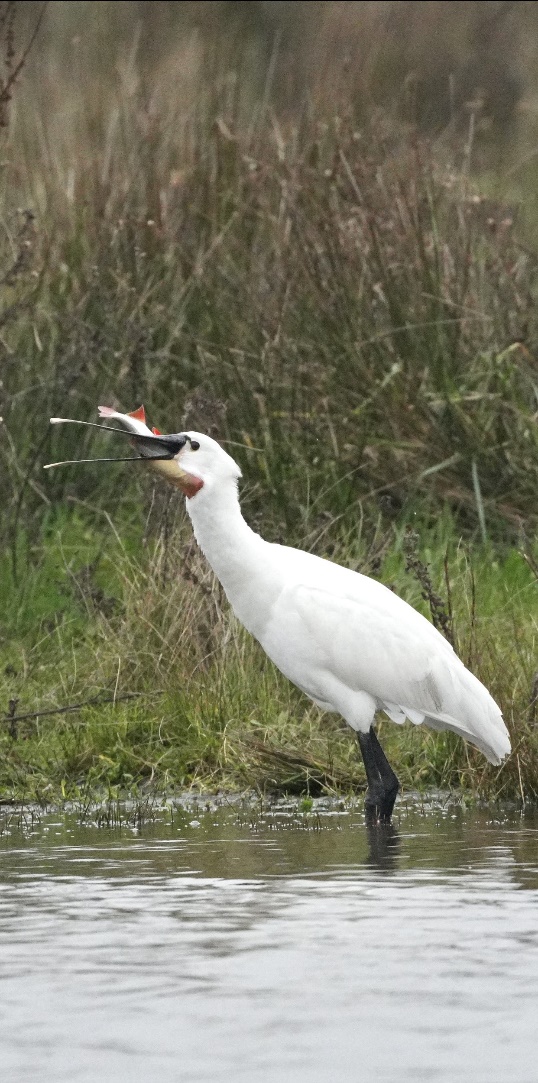
Adult spoonbill with fish (winde/rush) - Photo: Sven Prins
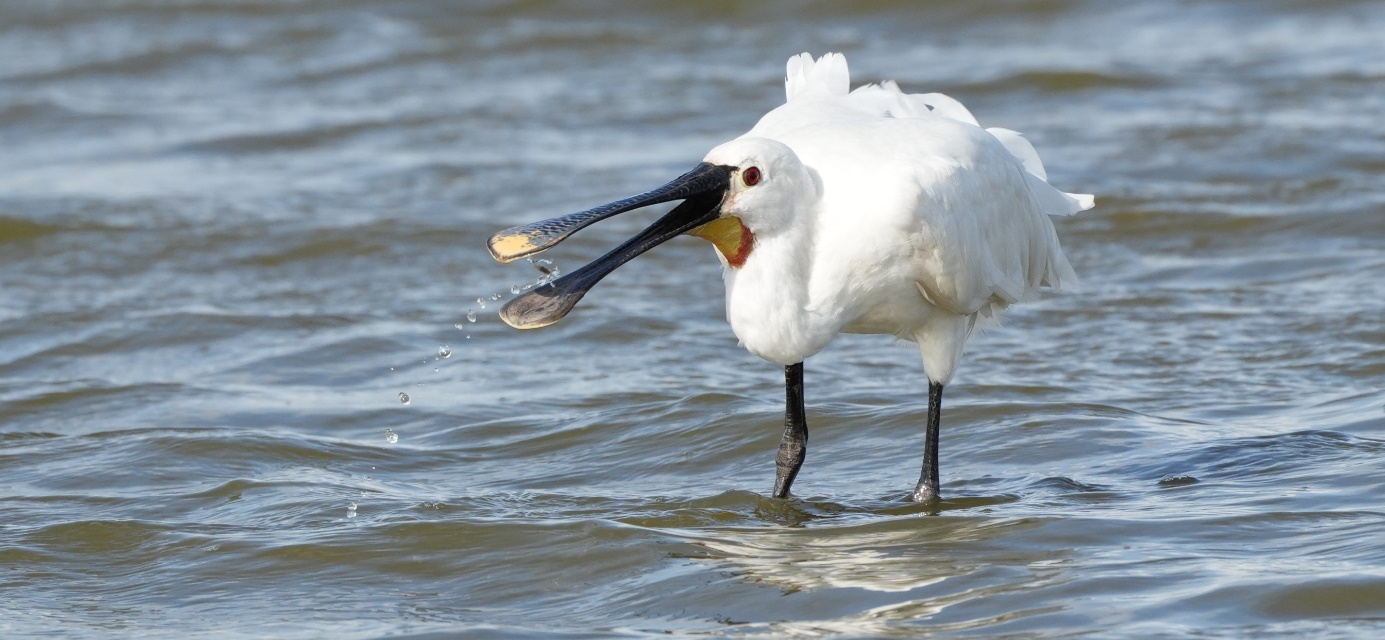
Spoonbill foraging for shrimp in Prunjepolder - Photo: Sven Prins
A great example of a young bird wandering in search of food is transmitter spoonbill Carex (NH2R), a bird ringed on Griend Island last summer by Harry Horn and fitted with a transmitter. That transmitter gives us tremendously valuable information. Not so much just where the bird is staying but more importantly, is the bird still alive? What areas are being used for foraging? Is the bird migrating in a group with some of those experienced adults who know how to find the best fishing spots? Carex spent her time on Griend and around the Ijsselmeer until almost mid-October and flew in a straight line to Schouwen on the morning of October 15. In the past 3 months she has made wanderings through the Prunjepolder in Serooskerke, De Maire in Oosterland, the polders of Zierikzee and the last few weeks she can often be found in nature reserve the Duinzoom, a freshwater area in Burgh-Haamstede. Carex is seen both alone and in groups of spoonbills and migrates with both inexperienced young birds and the experienced adults. mentioned where to catch the prey! Observing the groups of spoonbills that gather their food here are caught, like the great egrets, wolfing down hefty fish.
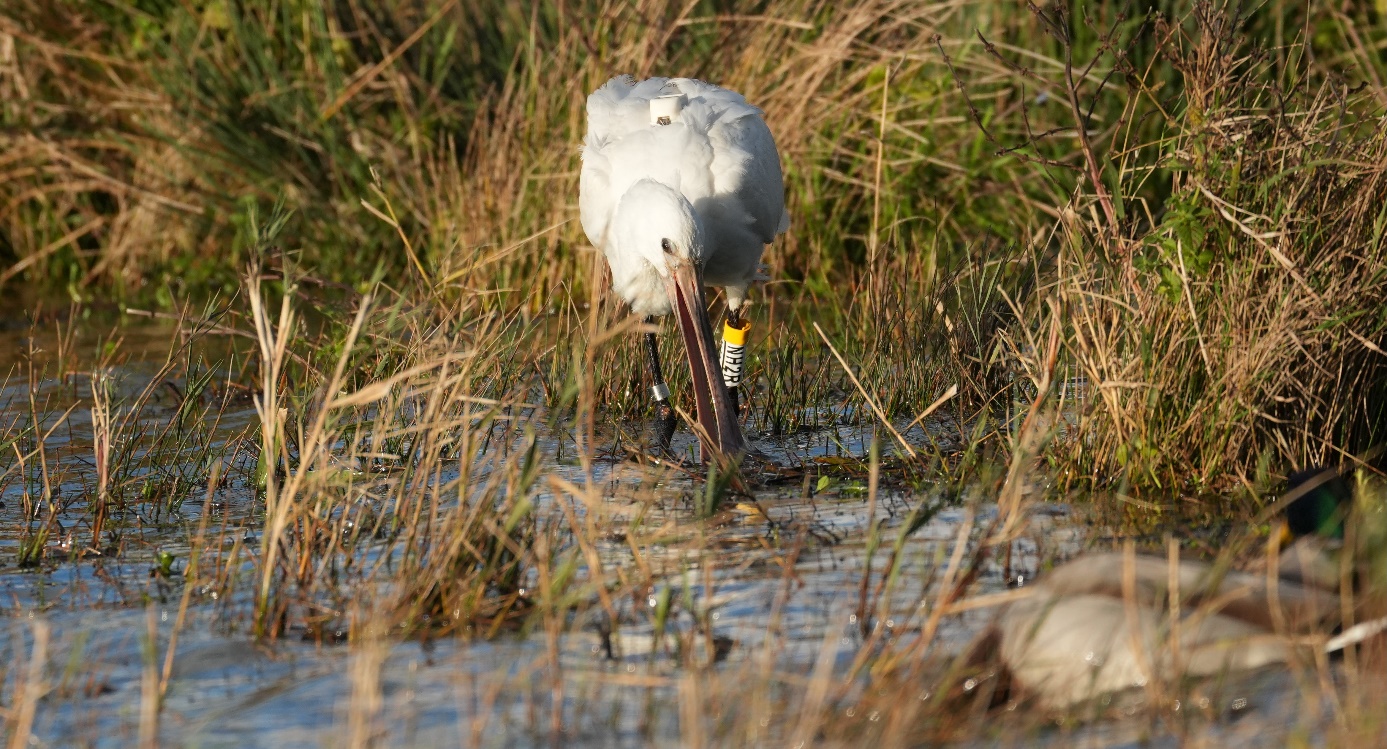
Carex foraging in freshwater habitat - Photo: Sven Prins
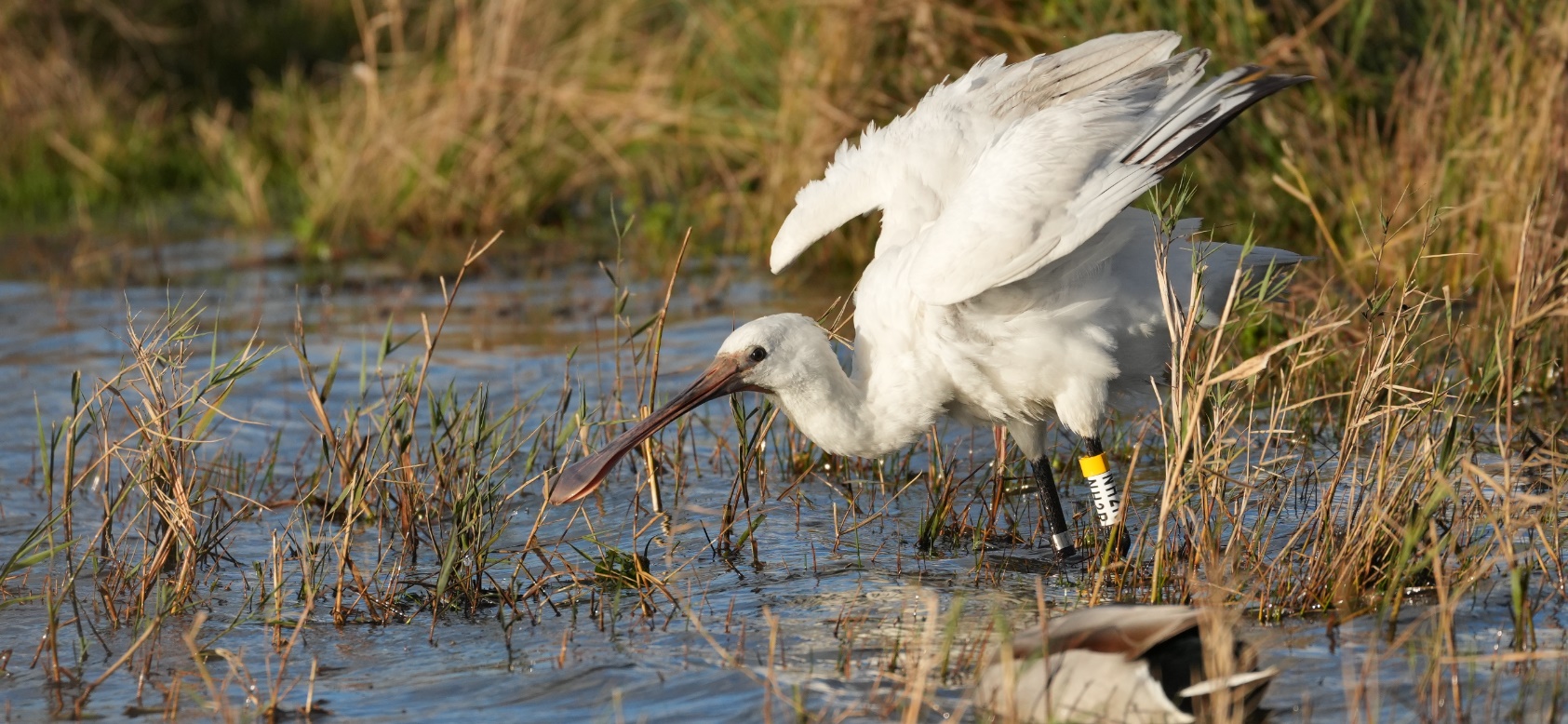
Carex stretches its wings after a long foraging session. - Photo: Sven Prins
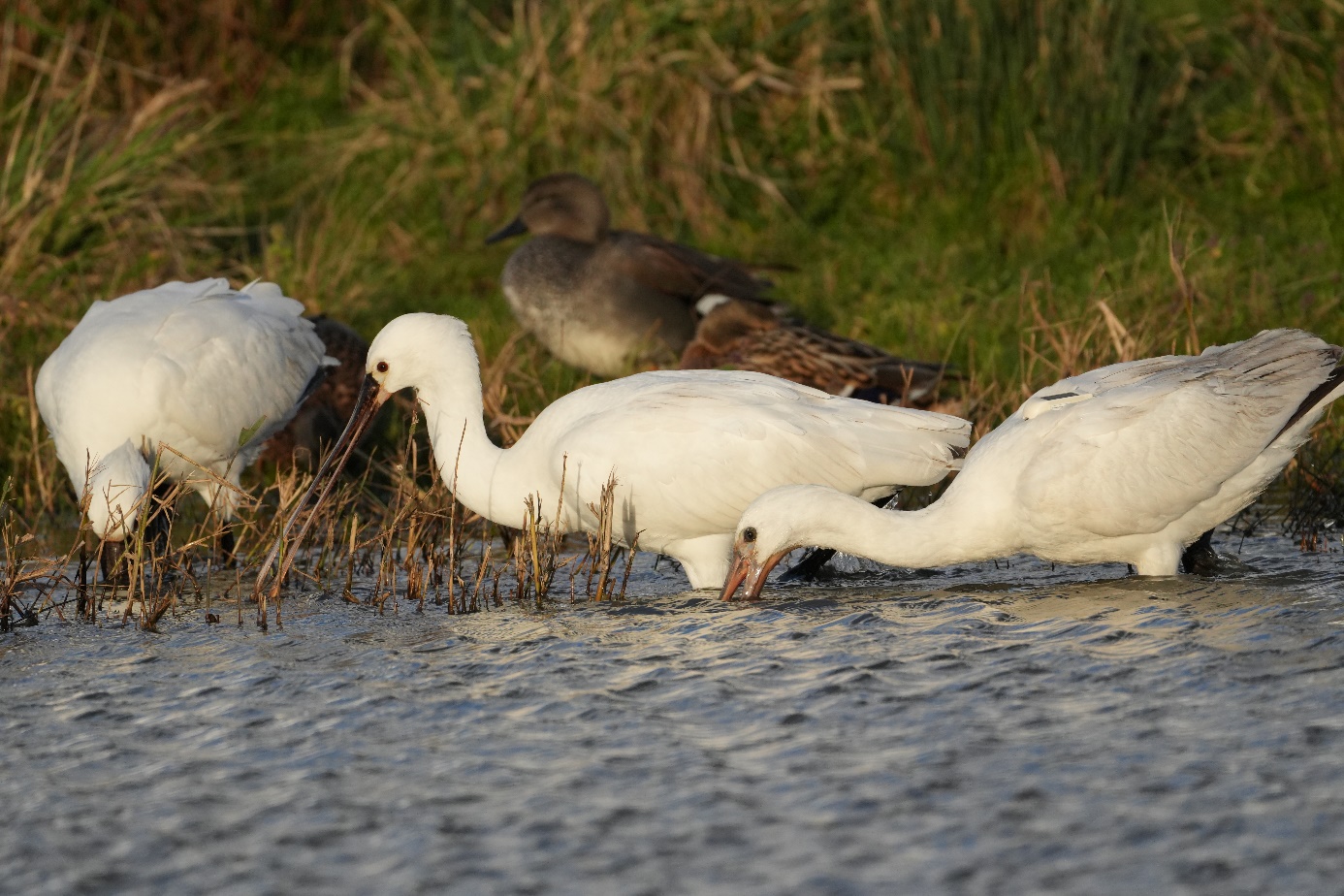
Transmitter spoonbill Carex (right) foraging in a freshwater lake with subadult spoonbills - Photo: Sven Prins
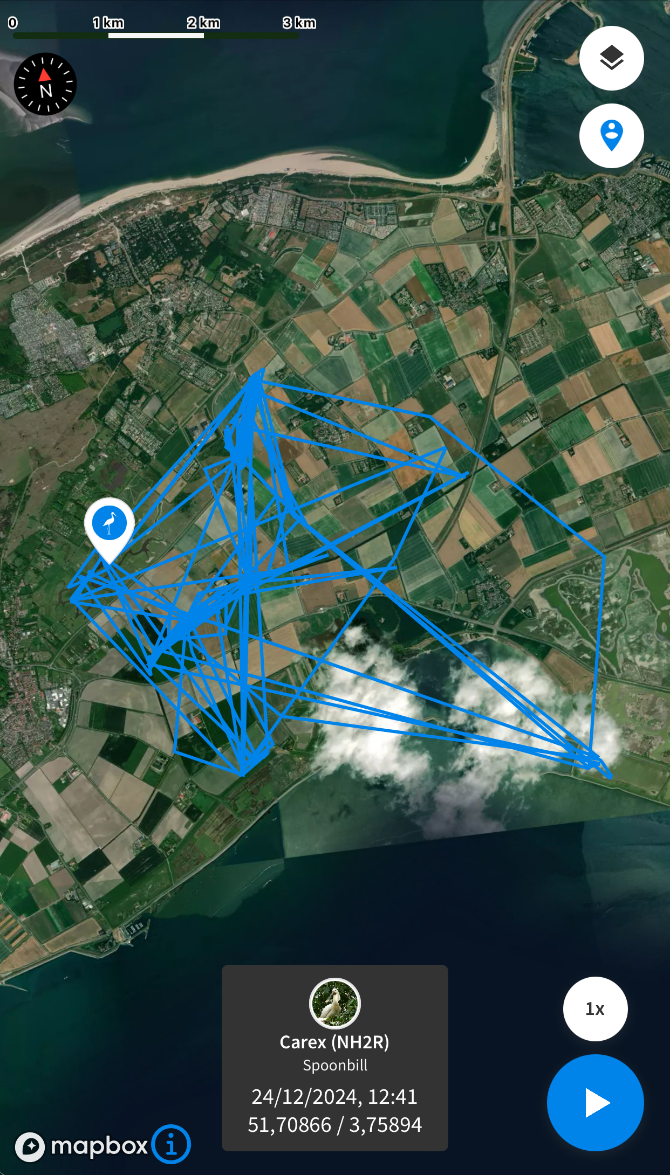
Movements of Carex in the latter part of December where she has a clear preference regarding foraging area and roost (inside the dike). It is striking that, compared to many other spoonbills, she does not forage in the Prunjepolder and, in contrast to the first weeks of November, stays only on the southwest coast of the island. - Photo: Sven Prins
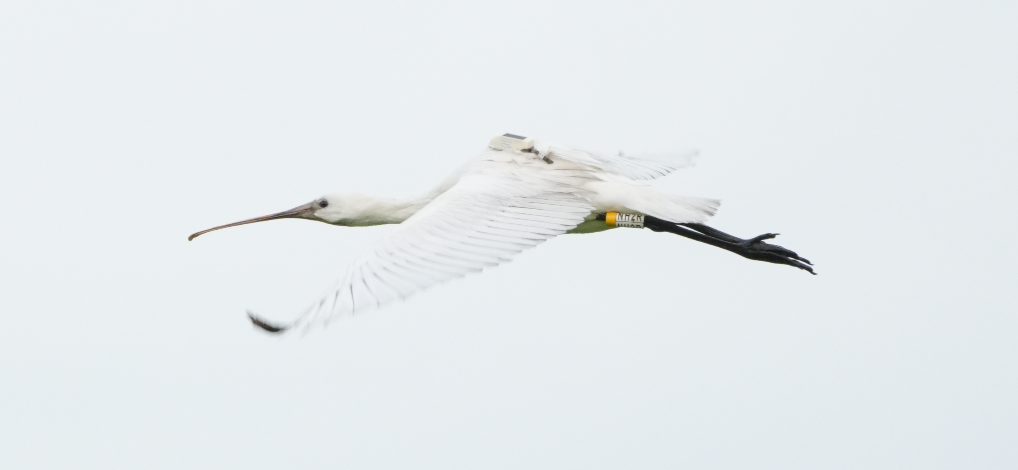
Carex - Photo: Sven Prins
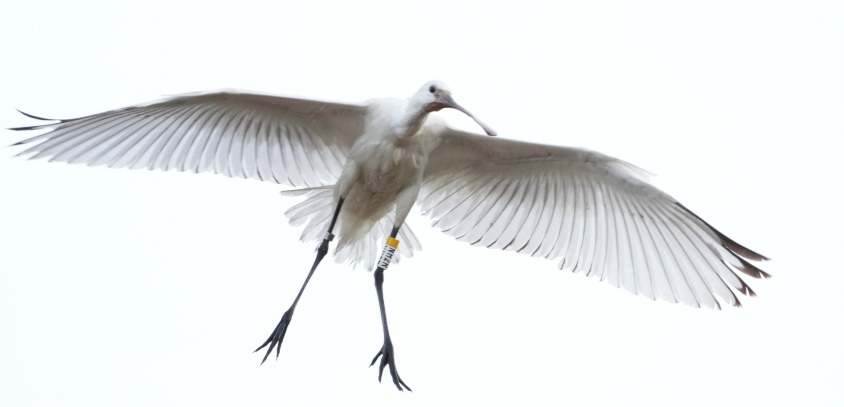
Carex - Photo: Sven Prins
By reading color rings, I was able to determine that the spoonbills that are mostly seen on Schouwen also visit other groups of spoonbills outside the island, or on the other hand individuals that change foraging areas a lot. For example, there are birds that I read off on Schouwen and saw a day later at De Kwade Hoek in the Haringvliet. So those birds commute back and forth between these areas, a distance of 23 kilometers. For such a mile-eater as the spoonbill, of course, a piece of cake. At the time of writing, another transmitter spoonbill, Meep, made a brief visit to Schouwen. Meep, ringed with code NFCZ, can mostly be found at De Kwade Hoek, but also flies regularly to the Nieuwe Driemanspolder in Zoetermeer where she is now a familiar sight among many birders there. While waiting for a new update of Carex’s transmitter data, I suddenly saw that Meep must be in a nature reserve along the Zeeland Bridge and went straight to see how she was doing. I found her foraging in a group of 8 other spoonbills, including 1 ringed 2nd kj wintering. Meep did not stay long on Schouwen, because that same night she flew back to De Kwade Hoek via the Slikken van Flakkee. Movements we would never have known about without the transmitter data!
Anyone who has visited the spoonbills on Schouwen once may know that there are quite a few birds with color rings among them. Extremely interesting of course to keep an eye on how these birds use their foraging areas and show that they are faithful to those areas every winter. The birds with color-rings that I regularly read off on Schouwen during the month of December are: aYY/NfRP, NAVT, NDVS, NFH3, NF7D, NH2R, NH72, NFV1 and so an occasional transmitter spoonbill Meep (NFCZ), in a mixed group of adults, 1st and 2nd kj birds. 3 of the above color-ringed spoonbills hatched and ringed on Schouwen (Vliet Vlieland & Prins). For the readers who read spoonbills in the Delta area probably by now familiar color rings. Because some birds do show some movements, it is not easy to determine how many wintering birds are on the island, but the estimate is about 30-50 spoonbills. After the winter bird count these figures will be a bit more precise.

